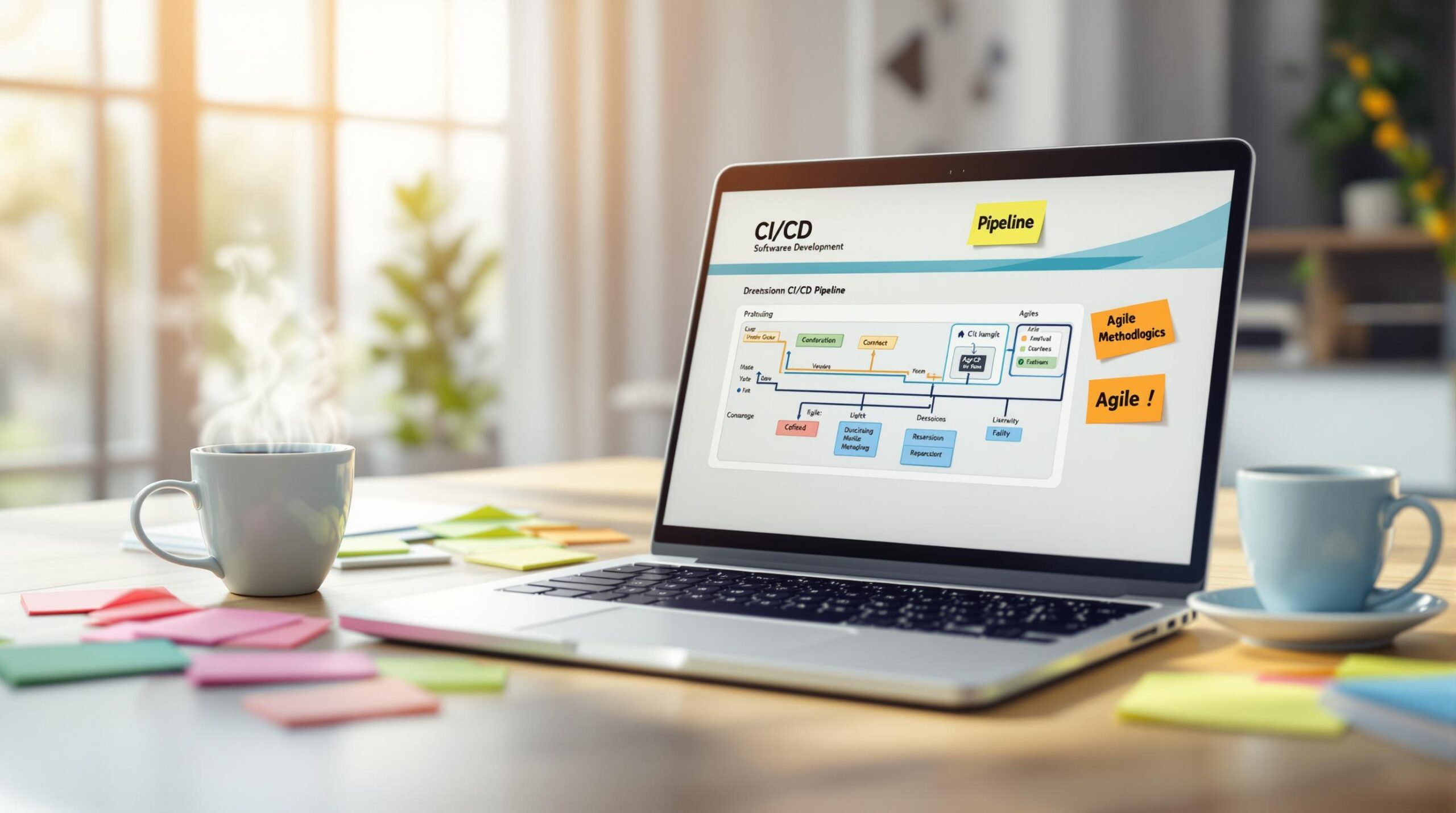- Coding Bootcamps: Fast-track learning with structured lessons, mentorship, and career support.
- Personal Projects: Build a portfolio, solve real problems, and showcase your abilities.
- Open Source Contributions: Collaborate on real-world codebases and improve teamwork skills.
- Online Coding Platforms: Practice daily with challenges on LeetCode, HackerRank, and CodeWars.
- Internships: Gain on-the-job experience and network for future opportunities.
Quick Start Tips:
- Choose a coding bootcamp: Look for programs with project-based learning and career services.
- Start a personal project: Align it with your career goals and document your work on GitHub.
- Contribute to open source: Find beginner-friendly issues on GitHub to boost your skills.
- Practice consistently: Use platforms like LeetCode to prepare for coding interviews.
- Apply for internships early: Tailor your resume to highlight your coding experience.
These steps will help you bridge the gap between learning theory and applying it in the tech world. Dive in and start building today!
Join Coding Bootcamps
Coding bootcamps provide a fast-paced way to learn programming, offering practical experience that bridges the gap between theory and real-world application. These programs focus on teaching skills that align with industry needs.
Why Choose a Coding Bootcamp?
Bootcamps tackle common learning challenges like information overload by offering structured, focused lessons. They help students escape the cycle of endless tutorials and instead focus on building real, applicable skills.
| Benefit | Description | Impact |
|---|---|---|
| Intensive Training | Focused learning on specific technologies | Accelerates skill acquisition |
| Industry Mentorship | Guidance from experienced professionals | Personalized advice and support |
| Project-Based Learning | Creating real-world applications | Builds a portfolio for careers |
| Career Support | Job placement assistance | Improves employment chances |
CareerFoundry reports that "80% of bootcamp graduates found employment within six months of graduation" [2]. This highlights how bootcamps can effectively prepare students for tech roles.
How to Choose the Right Bootcamp
When picking a bootcamp, keep these factors in mind:
| Factor | Things to Evaluate |
|---|---|
| Format & Duration | Online or in-person, full-time or part-time |
| Specialization | Tracks like Web Development or Data Science |
| Cost | Tuition fees and available financing options |
Some well-known programs include:
- KodNest: Offers Full Stack Development courses with placement support.
- Scaler: Features structured curriculums aligned with industry standards.
Look for bootcamps that provide:
- Hands-on projects and regular feedback
- Real-world applications to enhance your portfolio
- Access to mentors for guidance
- Career services, including job placement support
While bootcamps offer a structured way to learn, working on personal projects alongside your training can help you develop skills tailored to your interests.
Create Personal Projects
Working on personal projects is a great way to gain practical coding experience while building a portfolio to impress potential employers. Unlike following tutorials, personal projects push you to solve actual problems and make decisions on your own, bridging the gap between learning and applying.
Portfolio Development and Career Goals
Choose projects that align with your career goals and highlight the skills needed for your desired role. Here are some examples:
| Project Type | Career Path | Skills Highlighted |
|---|---|---|
| User Authentication System with Finance Tracking | Full Stack Development | Security, Database Management, API Design, CRUD Operations |
| Weather Application | Frontend Development | API Integration, UI/UX, JavaScript |
| Personal Blog | Web Development | Content Management, SEO, Responsive Design |
Steps for Project Planning and Execution
-
Define Project Scope
- Set clear goals based on real problems or personal interests.
- Break tasks into manageable chunks using tools like Trello or GitHub Projects.
-
Implementation and Documentation
- Write clean, readable code.
- Include a README with installation instructions, usage examples, and contribution guidelines.
- Test your work thoroughly and document the key features.
"Any fool can write code that a computer can understand. Good programmers write code that humans can understand."
Useful Tools and Resources
Here are some tools to help you along the way:
| Tool Category | Recommended Options | Purpose |
|---|---|---|
| Version Control | GitHub | Code management and collaboration |
| Frontend Development | CodePen | Quick prototyping for web projects |
| Code Quality | ESLint, Prettier | Enforcing clean and consistent code |
For open-source projects, consider using licenses like MIT or GPL to protect your work. If collaborating with others, enable GitHub’s branch protection to maintain code quality.
Once you’ve gained confidence with personal projects, contributing to open-source initiatives is a great way to sharpen your skills further and collaborate with a broader community.
Contribute to Open-Source Projects
Getting involved in open-source development is a great way for students to transition from learning on their own to working in collaborative coding environments. By contributing, students can break free from endless tutorials and start working with established codebases and professional workflows.
Introduction to Open Source
GitHub hosts a wide range of open-source projects where students can gain hands-on experience while working alongside developers worldwide. To get started, look for repositories tagged with labels like "first-timers-only" or "good-first-issue." Here are two beginner-friendly projects to explore:
| Project Name | Focus Area | Why It’s Beginner-Friendly |
|---|---|---|
| Flask | Web Framework | Offers clear documentation and a small codebase, plus an active community. |
| Elasticsearch | Data Analysis | Features well-labeled issues and detailed contribution guides. |
Steps for First Contribution
Here’s how to make your first contribution to an open-source project:
-
Find the Right Project and Issue
- Pick projects with clear documentation and active maintainers.
- Look for issues labeled "beginner-friendly" or "good-first-issue."
- Check that the project has recent activity and responsive maintainers.
-
Follow the Contribution Process
- Carefully read and follow the project’s contribution guidelines.
- Focus on making small, well-documented changes.
- Submit pull requests with clear, detailed explanations.
Skills Gained from Open Source
Contributing to open-source projects helps you build key professional skills:
| Skill Category | Benefits | Real-World Application |
|---|---|---|
| Technical Skills | Learn code reviews and version control. | Gain experience with large codebases. |
| Collaboration | Work with distributed teams. | Improve professional communication. |
| Problem-Solving | Practice debugging and critical thinking. | Design better solutions. |
"Open source isn’t just about writing code. It’s about learning to work with others and building something that matters to people", says a TensorFlow project maintainer.
Unlike personal projects, contributing to open source gives students a chance to experience professional workflows and collaborate with global teams. Once you’ve built confidence through open-source work, online coding platforms can help you sharpen your skills even further and prepare for technical interviews.
sbb-itb-f454395
Use Online Coding Platforms
Online coding platforms are powerful tools for students aiming to turn theoretical knowledge into hands-on coding skills. They help sharpen problem-solving abilities and prepare for coding challenges in practical scenarios.
Overview of Key Platforms
Different platforms cater to various learning goals:
| Platform | Core Features | Best For |
|---|---|---|
| LeetCode | Over 2,000 coding challenges, daily problems, interview simulations | Algorithm practice, interview prep |
| HackerRank | Language-specific tasks, certification tests | Skill validation, job recruitment |
| CodeWars | Gamified challenges, community-driven solutions | Gradual skill development |
LeetCode offers a premium subscription at $35/month, which includes company-specific interview questions and detailed solutions. HackerRank’s premium plan is a more affordable $12.99/month, making it accessible for those on a budget.
Strategies for Effective Practice
Consistency is key when improving coding skills. Start with simpler problems in the morning, move to intermediate ones in the evening, and save the toughest challenges for weekends. Focus on areas like data structures, algorithms, problem-solving strategies, and efficiency.
According to the Stack Overflow Developer Survey 2022, 70% of developers use these platforms to improve their skills. Regular practice not only boosts technical knowledge but also builds confidence over time.
Preparation for Technical Interviews
"The key to success isn’t just solving problems – it’s understanding the underlying patterns and being able to explain your thought process clearly", says Gayle Laakmann McDowell.
Start preparing 3-4 months before your interviews. Track your progress and practice under conditions that mimic real interviews. Communities like Reddit’s r/learnprogramming and r/cscareerquestions are excellent resources for advice and tips from experienced developers.
While these platforms are great for mastering technical skills, internships allow you to apply what you’ve learned in actual work environments.
Gain Experience Through Internships
Internships are a great way to connect what you’ve learned in school with practical, on-the-job coding experience. They let you work on real-world projects and give you a glimpse of professional environments. Plus, they can lead to job offers – 58% of interns were offered roles by their internship employers in 2022, according to the National Association of Colleges and Employers. Pairing internships with personal projects and open-source work can set you up for success in the tech field.
Finding Internship Opportunities
Start hunting for internships 6–12 months before you want to begin. Many companies post openings well in advance, so getting a head start is key. Here are some platforms to focus on:
| Platform | Best For |
|---|---|
| Tech roles available throughout the year | |
| Indeed | Local and remote opportunities; apply 3–4 months ahead |
Creating a Strong Application
To stand out in a competitive pool of applicants, your application should highlight both your technical skills and hands-on experience. Here’s how to make an impact:
- Project-focused resume: Showcase your coding accomplishments and key projects.
- GitHub portfolio: Include examples of clean, well-documented code.
- Relevant coursework: Highlight classes that match the internship’s requirements.
"Internships offer invaluable hands-on experience and can lead to full-time roles", says Martin Ramsin, Founder of CareerFoundry [2].
Making the Most of an Internship
Once you’ve landed an internship, make every moment count. Here’s how to maximize the experience:
- Work on meaningful projects that sharpen your skills and document your contributions.
- Build relationships with colleagues and mentors, ask for feedback, and join company events.
- Schedule regular check-ins with your supervisor to review your progress and get advice.
Internships are your chance to apply what you know in a professional setting, giving you a strong foundation as you step into the tech industry.
Conclusion
Key Strategies for Gaining Coding Experience
Turning coding knowledge into real-world expertise takes effort and the right approach. Here’s a quick look at some effective strategies to help you grow your skills and prepare for a tech career:
| Strategy | Benefits |
|---|---|
| Coding Bootcamps | Structured lessons, expert guidance |
| Personal Projects | Builds your portfolio, sharpens problem-solving |
| Open Source | Teamwork experience, feedback on your code |
| Online Platforms | Practice coding daily, prep for interviews |
| Internships | Hands-on experience, networking opportunities |
These strategies can set you on the path to becoming a skilled coder.
Practical Steps to Get Started
Start by picking a strategy that fits your current skills and career goals. Combine structured learning, like bootcamps, with personal projects to showcase your abilities. Look into internships or open-source projects to gain teamwork and real-world coding experience.
"Working on Real-Time projects is the best way of learning how to code. It provides the opportunity to work with a team and assists in gaining more practical knowledge." – Simplilearn
Platforms like LeetCode for coding challenges or EsProc and Forem for open-source work can help you practice and grow. Building hands-on experience is key to standing out in the tech world. The industry is growing fast, so now’s the time to dive in, stay consistent, and take advantage of these opportunities.
FAQs
How to get hands-on coding experience?
Getting practical coding experience means diving into a mix of learning methods that help you apply what you’ve learned. Here are some popular approaches:
| Method | Benefits |
|---|---|
| Personal Projects | Build a portfolio, showcase creativity |
| Open Source | Work with real codebases, collaborate with others |
| Coding Bootcamps | Learn in a structured environment with expert support |
| Online Platforms | Practice daily and prepare for interviews |
| Internships | Gain experience in a professional setting |
Each approach has its strengths. For example, personal projects let you showcase your skills and creativity, while open-source contributions give you experience working with real-world code and teams. Coding bootcamps provide a structured way to learn, online platforms help you stay consistent, and internships immerse you in a professional environment.
Beginner-friendly open-source platforms are a great way to start collaborating on code [3]. Focus on building projects that address real-world problems to effectively demonstrate your skills [1].





